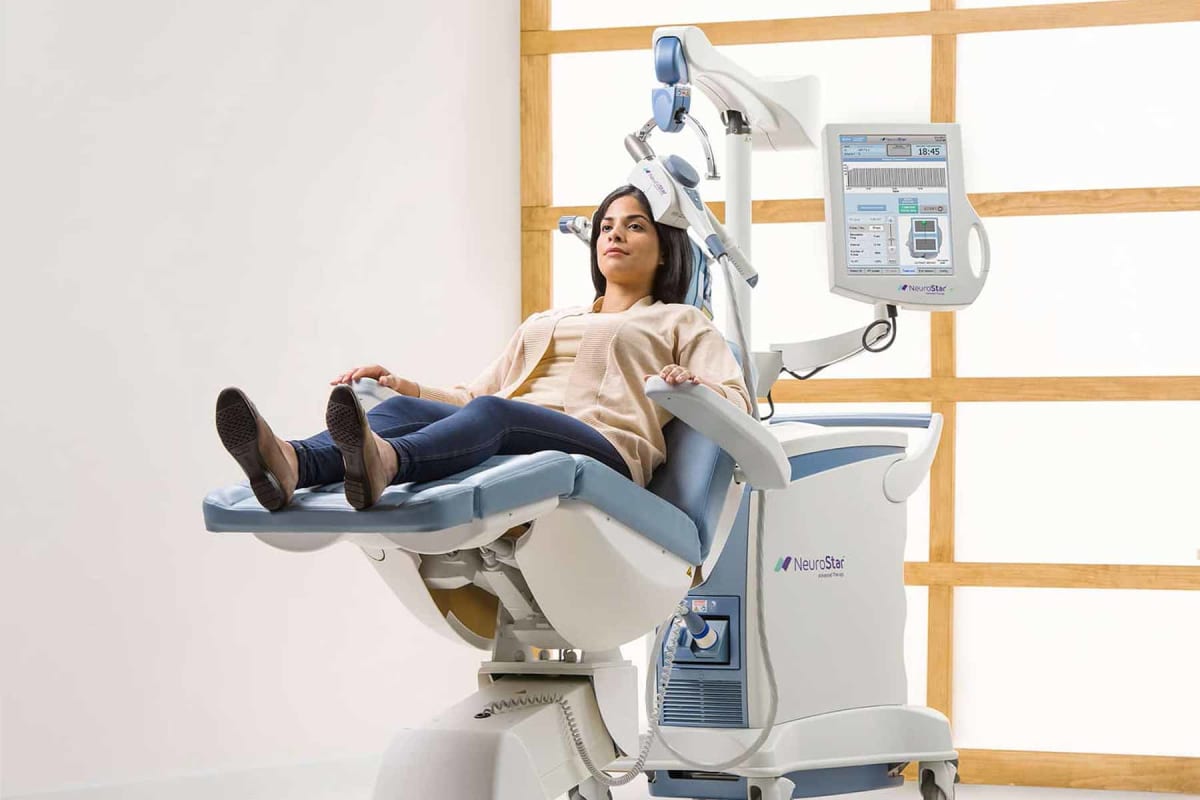
How much does TMS therapy cost?
How much does TMS therapy cost?
$200 – $500 cost per session (without insurance)
$6,000 – $15,000 total treatment cost (without insurance)
$10 – $70 cost per session (copay with insurance)
$300 – $2,500 total treatment cost (with insurance)
TMS therapy cost
TMS therapy costs $200 to $500 per session without insurance, or $6,000 to $15,000 total out of pocket for a full course of treatment with 30 to 36 sessions. The average cost of TMS therapy with insurance is $10 to $70 per session for the copay or $300 to $2,500 total.
| Factor | Average cost without insurance | Average cost with insurance* |
|---|---|---|
| Per session | $200 – $500 | $10 – $70 (copay) |
| Total treatment | $6,000 – $15,000 | $300 – $2,500 |
*After meeting deductible; coverage varies by insurance plan.
Does insurance cover TMS therapy?
Most health insurance covers TMS therapy for patients diagnosed with Major Depressive Disorder (MDD). Copays range from $10 to $70 per session on average after meeting your deductible. However, coverage varies significantly depending on the plan.
Many insurance companies require patients to have a history of treatment failure with at least two to four antidepressant medications before authorizing coverage for TMS therapy. Check with your insurance provider to confirm your treatment costs will be covered.
What is TMS therapy?
Transcranial magnetic stimulation (TMS) is a non-invasive treatment that uses pulsed magnetic fields to influence electrical activity in specific areas of the brain to reduce symptoms of major depression.
Though TMS therapy is most often used to treat depression, the U.S. Food and Drug Administration (FDA) has also approved its use in treating obsessive-compulsive disorder (OCD), migraines with aura, and short-term smoking cessation.

How does TMS therapy work?
TMS uses a magnetic coil housed in a helmet you wear or attached to an extension arm. Your provider can adjust the arm to position the coil near your head while you're seated comfortably in a specially designed chair.
During a TMS session, the magnet delivers a series of pulses that stimulate nerve cells in the areas of your brain associated with mood regulation. Because these regions of the brain typically show decreased activity in people with depression, activating them restores normal neural activity in the brain and reduces depression symptoms.
How long does a TMS treatment take?
Each TMS session lasts 20 to 50 minutes. A typical course of TMS therapy involves a total of 30 to 36 sessions, with treatment administered five days a week for 5 to 6+ weeks. Noticeable improvements may occur as early as 1 to 2 weeks, though most patients first experience benefits after 15 sessions.
Does TMS therapy work for depression?
According to Harvard Medical School, 50% to 60% of people experienced a reduction in depression symptoms after TMS therapy. One-third of patients experienced a full remission with all depression symptoms completely going away after a full course of treatment.
The benefits of TMS therapy include:
Improved mood
Better sleep
Increased motivation and energy
Reduced anxiety
Improved attention and memory
How long does TMS therapy last?
Most patients continue to feel better for 9 to 12+ months after TMS therapy, and some experience benefits for several years. Some people opt to return for periodic maintenance sessions or a second course of treatment later to extend the period of relief and prevent a relapse of depression symptoms.

Is TMS therapy safe?
TMS therapy is safe, non-invasive, and well-tolerated. In general, TMS has fewer side effects than antidepressant medications. The most common side effects, which are typically minor and fade shortly after a treatment session, include:
Discomfort in the scalp or neck
Tingling or twitching in the scalp or face
Headache
Dizziness or lightheadedness
Ringing in the ears or sensitivity to sound
The most serious side effect of TMS is seizures, but these are extremely rare with a risk of less than 1 in 10,000.
However, some individuals should not try TMS therapy, including:
People with epilepsy or other seizure disorders
People with metal implants or magnetic-sensitive devices or objects in the head
Pregnant or nursing women
Anyone with an acute risk of suicide or ongoing substance abuse
Is TMS the same thing as electroconvulsive therapy (ECT)?
TMS is not the same as electroconvulsive therapy (ECT). ECT involves applying direct electrical currents to the patient's head while the person is sedated, causing "therapeutic seizures" to stimulate the brain and reduce symptoms of depression and other mood disorders.
Unlike TMS, ECT can cause more intense side effects, including confusion, short-term memory loss, nausea, headaches, and muscle aches.
Because ECT requires anesthesia and causes short-term cognitive side effects, the recovery time after each session is longer. In comparison, patients remain awake during a TMS therapy session and can drive themselves home or return to work immediately afterward.
Electroconvulsive therapy costs $1,500 to $2,500 per session or $15,000 to $25,000 total for a full course of treatment with 10 sessions.